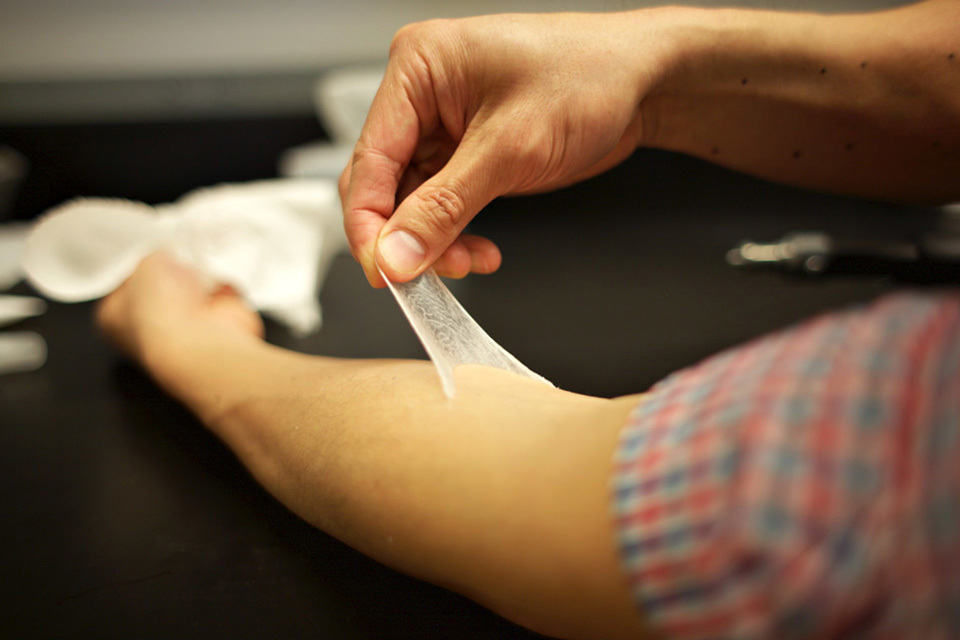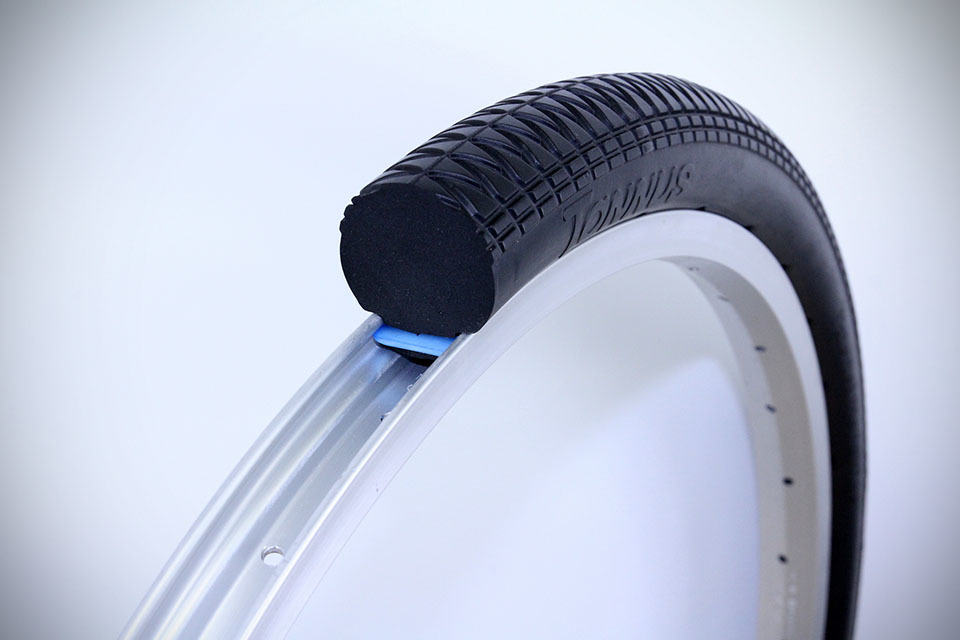These days photos lie. The advancement in imaging hardware and software allows us to beautify our photos even as we are taking the photo and as a result, photos may not be the most accurate representation of the real person. Just think of girls with skilfully applied makeup (which probably took hours to complete) and you will know what we mean. So far, the ‘misrepresentation’ is limited to digital images, but a new joint development by scientists at MIT, Massachusetts General Hospital, Living Proof, and Olivo Labs may soon enable a wrinkle-loaded person fool you into believing he or she is 10 or more years younger then they really are.
The material, dubbed Cross-linked Polymer Layer (or XLP in short), act as a second skin and is designed to temporarily protect and tighten skin, smooth wrinkles and even adapted to keep harmful UV off your body. Like a second skin, this silicone-based polymer is super thin and comes in a two-part fluid form that users can easily apply on affected area. When it dries, it forms a transparent layer that mimics the “mechanical and elastic properties of healthy, youthful skin.” Apart from concealing one of old age’s trade, i.e. wrinkles, Cross-linked Polymer Layer also have other medical applications too, including minimizing moisture loss, wound dressings and to administer drugs to treat those who have certain skin conditions.
Before you get elated, thinking you have found the elixir of youth, you have know that the effect, regardless of what they are used for, only last up to 24 hours. Though, you’d be glad that simple act like washing your face, even with soap, will not wash it away as it is totally water resistant. Also, it is not something you can buy off the market yet. Further refinement and testing needs to be done before it can become a reality, but rest assure, achieving youthful look is on the horizon. It is a good time to be alive, eh? Catch the research video below to learn more.
Image: Melanie Gonick/MIT.


